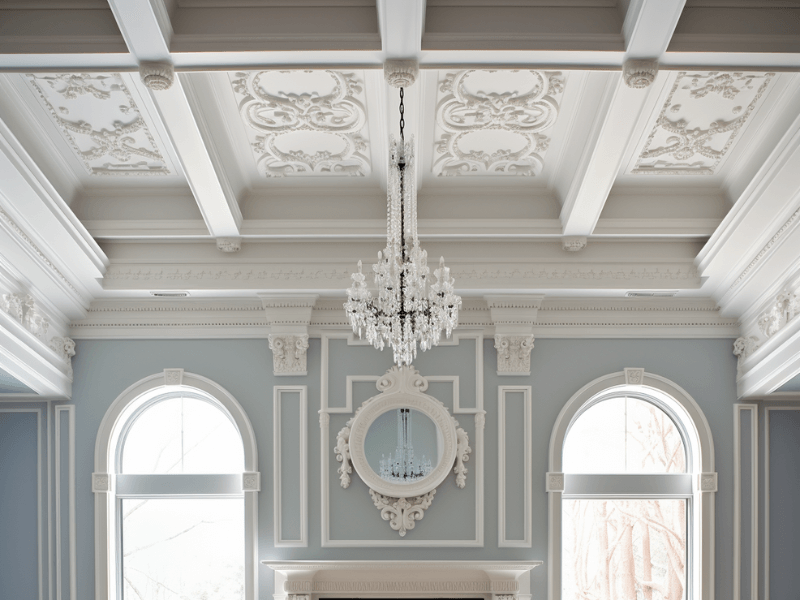Crown moldings are a splendid way to add a touch of elegance to any room.
Not only do they enhance your home’s aesthetic appeal, but they also offer a polished finish to your interior décor.
The choice of adhesive for installing crown moldings can significantly influence the project’s outcome, making it essential to make an informed decision.
When it comes to sticking crown moldings, adhesives play a vital role in ensuring durability and robustness. Let’s dive into the world of adhesives and explore which ones work best for your crown molding project.
All Stuck Up: A Sneak Peek into Adhesive Choices
- PVA Glue
- Polyurethane Glue
- Cyanoacrylate (Super Glue)
- Construction Adhesive

Adhesive Attributes: What Your Glue Needs
For crown molding projects, you need to look out for a few attributes in your adhesive. Here’s what to look for:
- Strong Bond: The adhesive should provide a powerful bond, ensuring the molding stays put once fixed.
- Fast Drying: Quick-setting time is beneficial for a seamless installation process.
- Versatility: The glue should be compatible with various surfaces like wood, plaster, or drywall.
- Durability: The adhesive should resist environmental changes like temperature and humidity, maintaining its bond over time.
- Flexibility: A slight flexibility can help the adhesive handle minor movements or shifts without breaking the bond.
Adhesive All-Stars: Top Picks for Crown Moldings
- PVA Glue: This water-based adhesive is great for porous materials like wood. It dries clear, which is great for finishing. However, it might not adhere well to non-porous surfaces.
- Polyurethane Glue: This is a strong, versatile adhesive that works well on different surfaces. It’s resistant to water, heat, and cold. However, it requires a slightly longer curing time.
- Cyanoacrylate (Super Glue): Known for its quick drying time, this adhesive works well for small-scale moldings. However, its strength might not be sufficient for heavy or large-scale moldings.
- Construction Adhesive: This strong, long-lasting adhesive is designed to adhere well to various materials, making it ideal for crown moldings. It can handle heavier loads but may need bracing until it’s fully cured.
Adhesive Stand-Off: Comparing the Contenders
- Ease of Use: PVA and super glue are user-friendly, while polyurethane glue and construction adhesive may require some experience.
- Adhesion & Strength: Construction adhesive and polyurethane glue offer a strong bond. PVA glue works well with porous surfaces, and super glue is best for quick, small-scale projects.
- Surface Preparation: All adhesives work best on clean, dry surfaces. However, polyurethane glue can work even on slightly damp surfaces.
- Versatility: Construction adhesive and polyurethane glue are versatile, working well with various surfaces.
- Durability: Construction adhesive and polyurethane glue have excellent durability, resisting temperature and humidity changes.
- Material Compatibility: All four adhesives work well with wood, but for plaster or drywall, construction adhesive is more reliable.
- Heat Resistance: Polyurethane glue has superior heat resistance.
- Removability: PVA and super glue can be removed more easily than construction adhesive or polyurethane glue.
- Flexibility: Polyurethane glue and construction adhesive offer some flexibility.
- Drying Time: Super glue dries the fastest, followed by PVA glue. Polyurethane glue and construction adhesive require longer curing times.
Molding Mishaps: Common Mistakes to Avoid
Choosing an adhesive that is not suitable for the material of your molding or wall can lead to poor results.
Make sure to read the adhesive specifications before purchasing. Also, rushing the curing process can compromise the bond strength.
It’s crucial to give the adhesive enough time to fully cure before moving on to the next step of your project.
Crown Glory: In Conclusion
The right adhesive can ensure your crown molding installation is a royal success.
By considering factors like the material of your molding, the surface it will be adhered to, and the specific characteristics of the adhesive, you can ensure a secure, durable bond.
With the right adhesive at hand, your crowning achievement is within reach!


